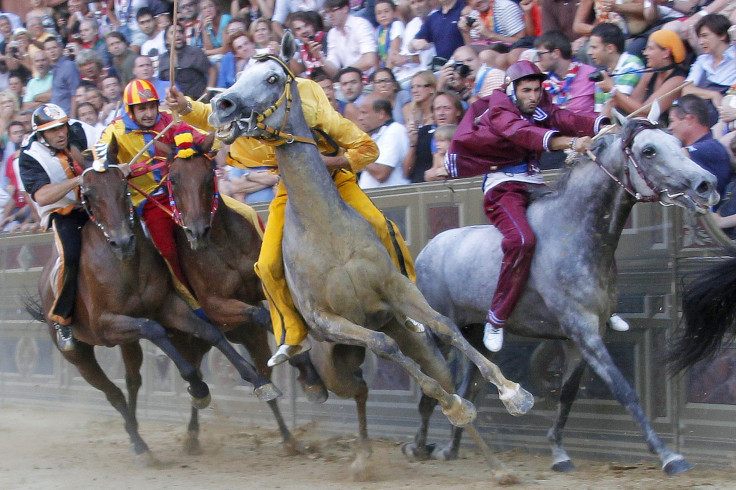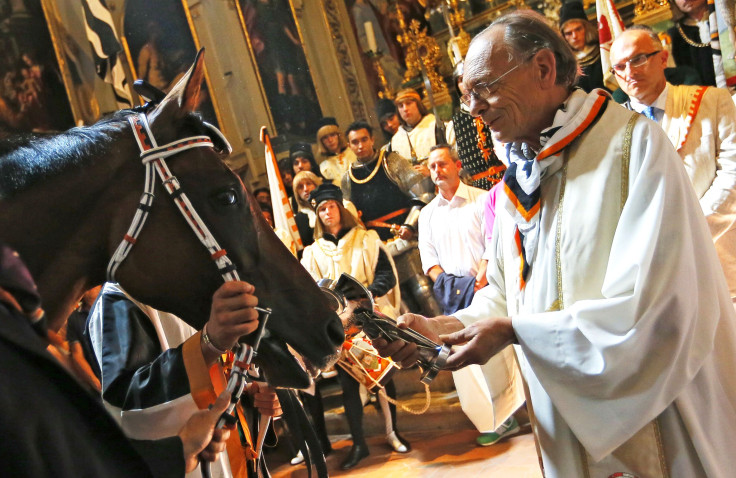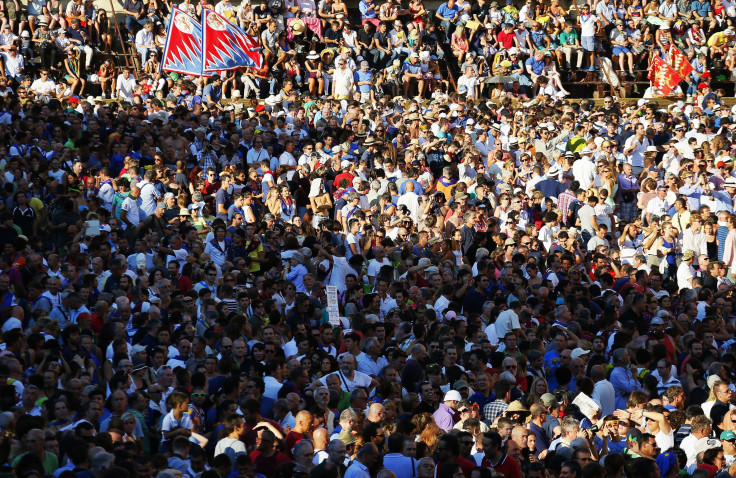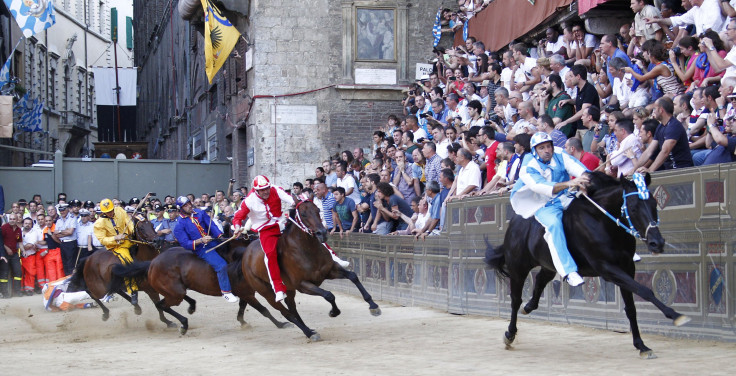Il Palio Siena 2015: What Is The Epic Horse Race Thundering Through Italy? [PHOTOS]

Jockeys from districts all over Siena are set to ride Sunday in a bareback horse race, thundering on their horses around the medieval town square in Siena in northern Italy. The race, called Il Palio, takes place twice a year and lasts less than two minutes, drawing tens of thousands of spectators from all over the world.
The earliest recorded Palio race took place in 1310, and the horses raced through the streets of the town instead of around a track. Local authorities soon discovered the danger for townspeople in such a set-up, and by the 17th century, the race had been moved to a makeshift ring around the town square.

Siena's Il Palio is the world oldest and most controversial horse race http://t.co/bhe30Gosla #InfoNdoroTweet pic.twitter.com/mKOMkHXdas
— IG: NdoroTweetID™ (@NdoroTweet) August 10, 2015Ten horses -- from 10 of the 17 districts, each called a "contrada" -- in Siena are chosen at random to race in Il Palio, with one competition taking place on July 2 and the other on Aug. 16. Winning Il Palio is a great honor, and local residents say the August victory is more prestigious because August victors get to keep their bragging rights for the rest of the year, the New York Times reported.


Il Palio has been called the most dangerous horse race because of the tiny space in which all 10 horses and jockeys race. The square in Siena is so crowded that riders are often thrown from their horses, and the horses have finished the race with injuries that resulted in them being put down, causing many to criticize the race for animal cruelty. Seven horses in the past 15 years have been euthanized after suffering injuries in Il Palio.
The competition is so fierce that horses have been drugged and jockeys kidnapped in instances of sabotage.
Il Palio a "tutto tondo" - #Siena #PalioDiSiena - Foto di Matteo Castelli - pic.twitter.com/5JRjOuLKu8
— Il Tesoro di Siena (@iltesorodisiena) August 14, 2015For the horse and jockey that win, the glory bestowed upon the home contrada is great, and celebrations can last for days. The winner of the race has a large canvas banner, called a "drappellone," created by an artist with the contrada's symbols on it. The drapellone is then proudly displayed in the local museum.
Think a banner isn't worth risking your life? Back when the race first began in medieval times, the jockey was carried home to his contrada on the shoulders of his compatriots where he received his prize: the local girl of his choice.
@MarcheTourism questa è la gioia di #Capodarco che oggi ha vinto il Palio dell'Assunta di Fermo! pic.twitter.com/QEXIE7jsuG
— Fermo Cavalcata (@Cavalcata_Fermo) August 15, 2015© Copyright IBTimes 2025. All rights reserved.





















